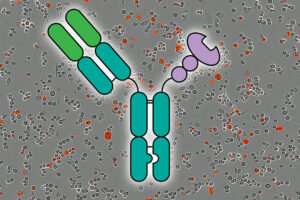
Scientists have developed an innovative technique for mapping the spottiness of distant stars by leveraging observations from NASA missions. This method utilizes data from orbiting planets crossing their stars’ faces, enhancing our understanding of stellar features. The model, known as StarryStarryProcess, builds upon techniques that have been used for decades to study star spots.
By refining astronomers’ knowledge of spotty stars, StarryStarryProcess could unlock new insights into planetary atmospheres and their potential habitability. This advancement is particularly relevant as it aligns with data from telescopes like NASA’s upcoming Pandora mission.
Revolutionizing Stellar Analysis
“Many of the models researchers use to analyze data from exoplanets, or worlds beyond our solar system, assume that stars are uniformly bright disks,” explained Sabina Sagynbayeva, a graduate student at Stony Brook University in New York. “But we know just by looking at our own Sun that stars are more complicated than that. Modeling complexity can be difficult, but our approach gives astronomers an idea of how many spots a star might have, where they are located, and how bright or dark they are.”
A paper detailing StarryStarryProcess, led by Sagynbayeva, was published on August 25 in The Astrophysical Journal. The research marks a significant step forward in the study of stellar phenomena, utilizing data from NASA’s TESS (Transiting Exoplanet Survey Satellite) and the now-retired Kepler Space Telescope.
The Role of Transit Light Curves
Both TESS and Kepler were designed to identify planets using transits, which are dips in stellar brightness caused when a planet passes in front of its star. These measurements reveal variations in the star’s light over time during each transit, which astronomers can plot as a light curve. Typically, a transit light curve traces a smooth sweep down as the planet begins to pass in front of the star, reaching minimum brightness when the planet is fully in front, and rising again as the transit concludes.
By analyzing the time between transits, scientists can determine a planet’s distance from its star and estimate its surface temperature. The amount of light blocked during a transit also provides clues about the planet’s size and composition.
Decoding Stellar Spots
Occasionally, a planet’s light curve appears more complex, with additional dips and peaks. These variations are thought to represent dark surface features similar to sunspots on our Sun, known as star spots. The Sun’s sunspots fluctuate in number during its 11-year solar cycle, helping scientists predict solar activity that could impact Earth.
Similarly, star spots are cool, dark, temporary patches on a star’s surface that change over time. Their variability affects what astronomers can learn about transiting planets. Previous analyses of transit light curves have helped determine host star properties, such as spottiness, inclination angle of the planet’s orbit, and the tilt of the star’s spin.
“Knowing more about the star in turn helps us learn even more about the planet, like a feedback loop,” said Brett Morris, a senior software engineer at the Space Telescope Science Institute in Baltimore.
Testing the Model
To validate their model, Sagynbayeva and her team examined transits from a planet called TOI 3884 b, located approximately 141 light-years away in the northern constellation Virgo. Discovered by TESS in 2022, this gas giant is estimated to be about five times larger than Earth and 32 times its mass.
The StarryStarryProcess analysis suggests that the planet’s cool, dim star, TOI 3384, has spot concentrations at its north pole, which faces Earth, allowing the planet to pass over the pole from our perspective. Currently, the model is limited to visible light data, excluding infrared observations from NASA’s James Webb Space Telescope.
Future Implications and the Pandora Mission
The upcoming Pandora mission, part of NASA’s Astrophysics Pioneers Program, will benefit from tools like StarryStarryProcess. Pandora aims to study exoplanet atmospheres and host star activities through long-duration multiwavelength observations. Its goal is to discern how a star’s light properties change when passing through a planet’s atmosphere, enhancing measurements using Webb and other missions.
“The TESS satellite has discovered thousands of planets since it launched in 2018,” noted Allison Youngblood, TESS project scientist at NASA’s Goddard Space Flight Center in Greenbelt, Maryland. “While Pandora will study about 20 worlds, it will advance our ability to pick out which signals come from stars and which come from planets. The more we understand the individual parts of a planetary system, the better we understand the whole — and our own.”
As astronomers continue to refine their models and techniques, the potential for discovering new planetary characteristics and understanding stellar phenomena grows ever more promising. The integration of these advanced methods with upcoming missions like Pandora marks a new era in the exploration of our universe.






